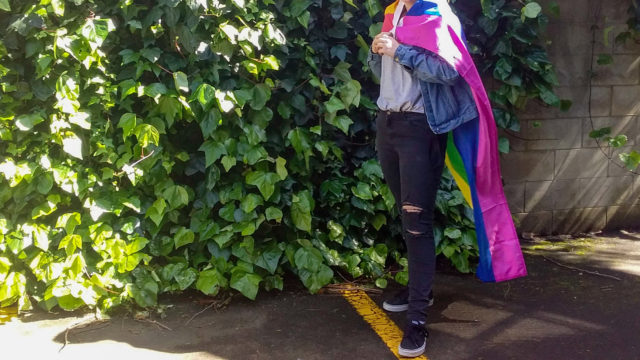The historical struggle of the pride community
The depth of New Zealand’s pride community history and ongoing issues are topics that is commonly overlooked and unspoken about.
History classes of New Zealand learn about many things; from the Māori land marches to the feminist movements of the 70s, the colonization of our country to the history of other countries and world wars. One topic rarely travelled, however, is New Zealand’s queer history.
This is something I was always disappointed in, but I had never realised how little many people in the community knew. In my opinion, queer struggles are just as important as other marginalised groups. This is why I want to bring attention to our history in this article.
Like many of our historical struggles, New Zealand followed the lead of other nations.
The first-ever New Zealand gay men’s group, the Dorian Society, began communicating with other international groups such as the English Homosexual Law Reform Society and Albany Trust in 1967. They decided to seek advice on passing a bill similar to England’s Sexual Offences Act of 1967. This act allowed consenting adults over 21 to legally have ‘homosexual relations.’
Additionally, activism was spearheaded by America’s 1969 Stonewall Riots. America’s history of pride is also quite interesting, it involves the unlikely alliance between the mob and drag queens.
In short, the mob was against alcohol prohibition and ran several illegal speakeasies across New York. A small handful were gay bars, and even less were welcoming to drag artists.
Stonewall Inn was one such gay bar located in Greenwich Village. After a late-night of partying, Stonewall Inn was subject to an attempted raid by police. Those found serving alcohol or cross-dressing were arrested. Suspected cross-dressing patrons were brought into the bathrooms by female police officers to check their sex.
Many members of the community and surrounding Greenwich area loitered despite police requests to move along.
Unrest grew as police loaded people into the paddy waggons until one lesbian was hit over the head by a police officer. The lesbian shouted at the crowds to throw whatever they had at police, including pennies, bottles, and cobblestones.
And thus, five days of riots began in the Stonewall area.
The Stonewall Riots led to aggressive activism across America. Its influence was felt in queer political groups all around the world.
Together with the more peaceful passing of England’s Sexual Offences Act, the queer people of New Zealand were inspired to begin their first steps into political activism.

As the century turned, political activism was in the air. Not only queer rights but also Maori and Feminist activism were at the forefront of peoples minds. The issue became not only about queer rights, but human rights in New Zealand.
In 1974, Venn Young spurred on by the Dorian Society, a Member of Parliament proposed a bill similar to England’s Sexual Offences Act to legalise private ‘homosexual activities.’ His bill was quickly shot down and lacked support from many queer people as they felt the age of consent for homosexual activities should be the same as heterosexuals.
March 8th, 1985, came the next proposed bill. Spearheaded by Member of Parliament Fran Wilde, the bill had two parts; one to do with decriminalizing homosexual actions and the other making discrimination on the bases of sexuality illegal.
The amount of public and parliamentary backlash to this bill was unexpected by Wilde, with the opposition gaining support from organizations such as The Salvation Army (who have a spotty history on LGBT rights).
Many arguments against the bill came from miseducation. Many feared the legalization of homosexual acts would lead to an AIDS epidemic, the collapse of family-values and lifestyle, and widespread paedophilia.
Nationwide, groups such as Heterosexuals Unafraid of Gays (HUG), the New Zealand Homosexual Law Reform Society, and the Lesbian Coalition sought out anti-law-reform meetings, marched the streets, and created an 800,000 signature petition.
Arguments rested upon freedom of choice and if the government should use the bible as the reasoning behind laws.
It took 14 months before the Homosexual Law Reform Bill was moved through the parliamentary process. The final vote, held on the 9th July 1986, was passed by 49 votes to 44.
Many celebrated, but this was only half the victory. The second half of the bill was not passed until the Human Rights Act of 1993 when it became illegal to discriminate on the grounds of sexual orientation.
In 2005, The Civil Unions Act allowed homosexual couples to formalize their relationships though partnership.
In 2013 The Marriage Amendment Bill was finally passed, allowing gay and lesbian couples to marry. New Zealand became the first Asia-Pacific region, and 13th country to allow same-sex marriage.
And that leads us here; the New Zealand of 2019. While the queer community still faces discrimination when simply being ourselves, laws like these and queer youth groups allow us to feel supported by a wider community.




